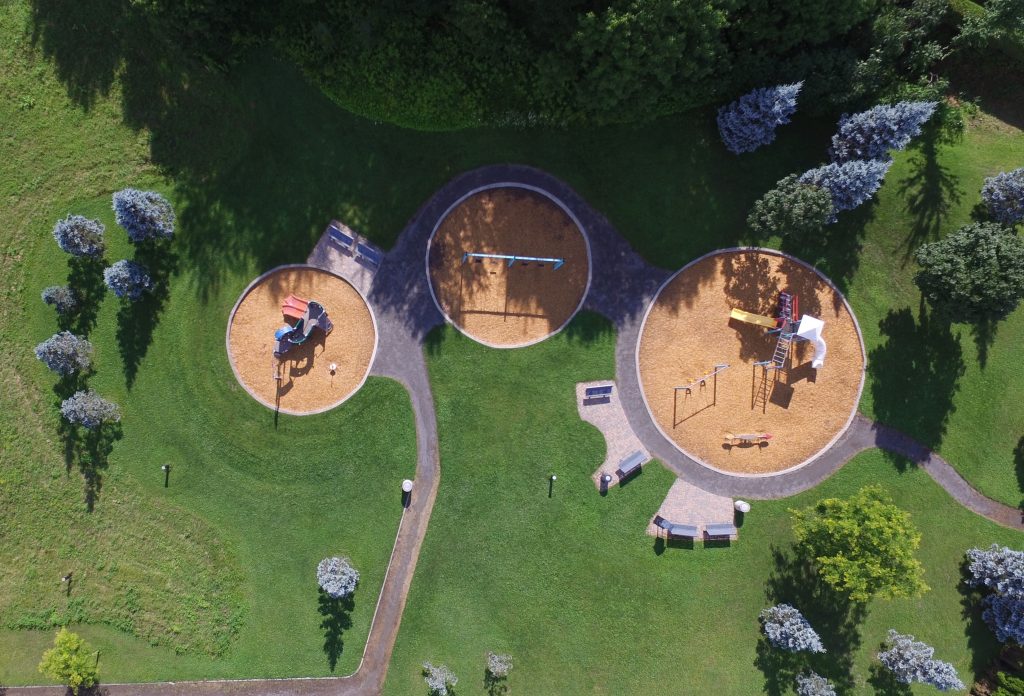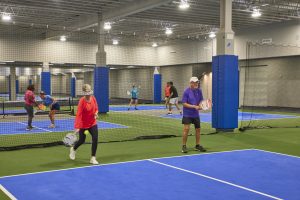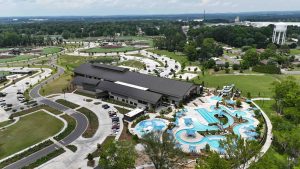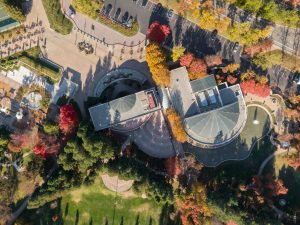Image courtesy of DroneflyerNick on Unsplash
Parks are important public spaces for promoting health, well-being, and social interactions. However, not everyone has equal access to these greenspaces. Many people, especially those with disabilities, face challenges when accessing parks due to structural, social, and economic barriers. In addition, some communities lack access to parks altogether. As society becomes more aware of these issues, there is a growing movement to make parks more inclusive and accessible to everyone, regardless of their age, ability level, income, or background. This blog post will discuss ways to make parks more accessible and inviting for all.
Design
One might think that building a park or playground to be ADA-compliant is all that is necessary to make it accessible and inclusive, but that is wrong. Being ADA-compliant is a great first step, but it should be considered the bare minimum of accessibility and inclusivity. The ADA requires pathways to be at least 36 inches wide, but that is quite narrow. Making those paths at least 60 inches wide is recommended so that someone using a mobility device can travel side by side with someone who isn’t using a mobility device. Since the paths are likely outdoors, you also need to ensure that the surface will be non-glare and non-slip in both wet and dry conditions. The paths must be firm and level, so loose gravel, mulch, or dirt must be avoided. Some good options to use are resin-bonded gravel, concrete, asphalt, wood, or bricks.
It is also a good idea to add rest areas to the side of pathways to allow people to take a break without blocking the path. Include tables and benches in these areas but remember to include space at the tables and next to the benches for mobility device users to sit with their friends and family. Something that happens frequently with parks and playgrounds that get retrofitted to be more accessible is that the accessible areas start to become separate from the rest of the features. This is problematic because instead of creating a welcoming environment for all, it creates a park or playground that is segregated into accessible areas and non-accessible areas. People who use mobility devices aren’t exclusively friends with other mobility device users. So, the design needs to allow people using mobility devices to enjoy the space with any of their friends or family members that do not use a mobility device. And vice versa.
Amenities
It can be difficult to make everything in a park or playground accessible for all, but effort should be put into making as much of the area accessible as possible. There are plenty of companies today that create park and playground accessories and amenities that are designed to be used by anyone, regardless of their ability level. Miracle Recreation is a good example of a company supplying accessible and inclusive playground equipment and accessories. Some of their best products for making playgrounds accessible for anyone are the Alta Glide Inclusive Glider, Inclusive Whirl, Inclusive Swing Seat, and the GlideAlong with Inclusive Swing Seat. These playground amenities provide multi-sensory play experiences for all children.
Along with their accessible line of amenities, they also have products suited for children with sensory disabilities. These amenities provide kids with activities that incorporate tactile, vestibular, visual, proprioceptive, olfactory, and auditory senses into their play. While this is a great way to make a park or playground inclusive to kids with sensory disabilities, sensory play is also important for every child’s development. It helps them develop language skills, academic growth, fine motor skills, and teaches them about differentiating different sensory cues.
Programming
While programming has nothing to do with ADA compliance, it can help to push your park or playground over the top in terms of inclusivity. Some examples of programs and activities that can fill a park or playground with more life are concerts, movies, or storytime in the park. You can also offer workshops and classes that don’t just bring people from your community together but also teaches them new things. Providing free programming to your community will bring more activity to the park or playground and leave lasting memories for those that participate.
Making parks and playgrounds more accessible is an essential step toward creating a more equitable and inclusive society. Whether it’s by designing paths and equipment to accommodate people with disabilities or offering free programming to community members, there are many ways to make parks and playgrounds more welcoming to everyone. It’s important to remember that accessibility is not just about compliance with regulations, it’s about creating spaces that reflect the needs and desires of all visitors. By taking steps to make these spaces more accessible, we can create healthy, vibrant communities for everyone to enjoy.






